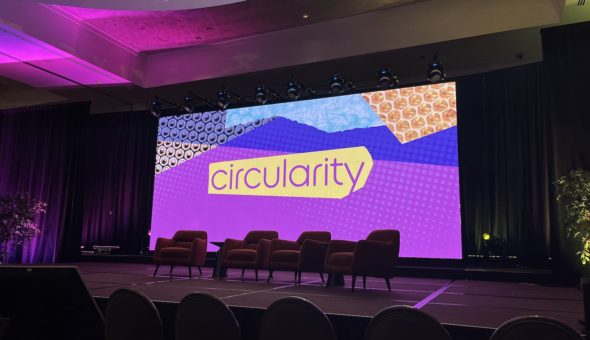Title picture: Burlington House © Royal Astronomical Society
Matt Cowley is a 1st year PhD student at the CSCT who works on perovskite solar cells. During the first few months of his PhD, he had the chance to attend a small conference organised by the Royal Society of Chemistry (RSC). On this blog post, Matt highlights the perks of these snug, more intimate events.
Small conferences give a great opportunity to find likeminded people working in your specialised area. They have an air of friendliness about them, as you almost have time to chat with everyone in the room — even during the short breaks between talks.
The RSC's event 'Next Generation Materials for Solar Photovoltaics' was held at Burlington House, the RSC’s home in London. And this one-day seminar captured this small-conference feeling perfectly.
I study the effect of defects in perovskite solar cells and how to control these errors, and this event attracted several people with great insight on the topic.
The main lecture hall was in the RSC Library, a beautiful space which would be very inviting to have a read in if it wasn’t filled with about 100 researchers (Picture: © Media Wisdom / Royal Society of Chemistry).
A hidden benefit of attending a conference so early in my PhD was the enforced crystallisation of my thoughts and research plans in the form of a poster. Given I was still in the first 4 months of my project, I had little novel data to show, but the process of refining my current research direction and opinions on literature was a useful exercise. Getting feedback on these ideas was also fruitful, as a new acquaintance pointed out a potential experimental technique I had not considered before.
My favourite speaker of the day was Dr Eva Unger from Helmholtz-Zentrum Berlin, who gave a walkthrough of her group’s work on scalable deposition methods for hybrid perovskites. Getting high-quality thin film formation is important for defect control and performance in these materials. Her work on in-situ characterisation was especially interesting, as too often the intermediates in these processes are simply guessed and the true mechanism not understood.
I also had an interesting chat with a fellow PhD student who works on the effect of solar radiation on solar cell devices. As someone who has spent many an hour watching space documentaries, this was an instant interest catcher, and I greatly enjoyed picking his brain on the extremes of temperature and radiation intensity that space-faring materials are subjected to.
All in all, a successful trip out without breaking the travel grant bank. Burlington House alone was almost worth attending for, with great food, lovely rooms and lots of cool chemistry nerd paraphernalia (a Yuri Oganessian signed ceramic periodic table, anyone?). London is always a lovely place to visit as it is my hometown, and Burlington House’s proximity to Chinatown is not to be understated. Cantonese-style pork and duck is a perfect post-symposium pit stop. Thanks to the CSCT and EPSRC for funding this trip.
Oast House Archive / Gerrard Street, Soho, London / CC BY-SA 2.0
Respond





